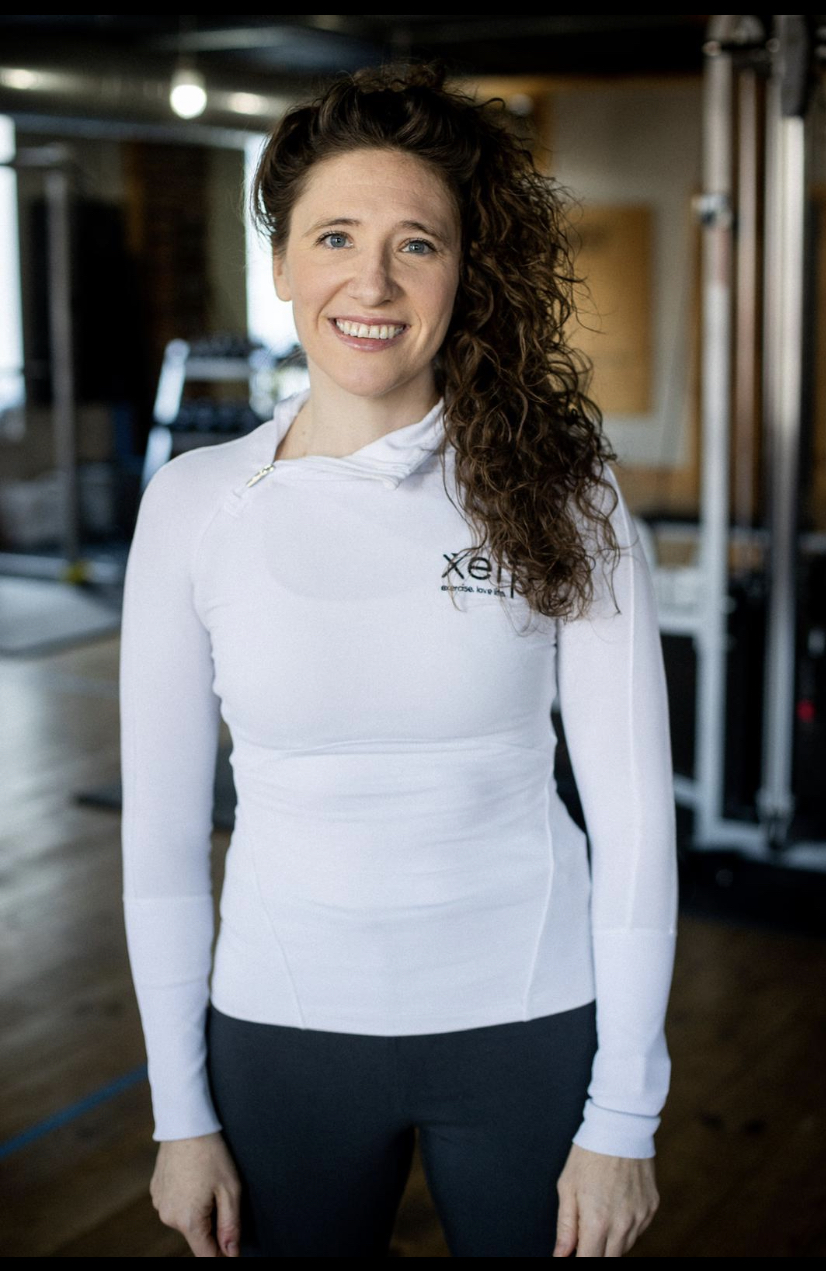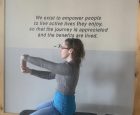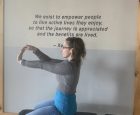
Features
Cranes
Education & Training
Crane operator ergonomics: Correcting crane cabin stiffness
Canadian health care professionals share how crane operators can maintain healthy muscles
April 8, 2021 By Jay Koblun
 Alison Pretty is a registered massage therapist in Hamilton, Ont. Photo: Kendra Pierroz
Alison Pretty is a registered massage therapist in Hamilton, Ont. Photo: Kendra Pierroz Crane operators work long hours sitting in the same spot for most or all of the day. Canadian healthcare professionals say construction workers and operators can be at risk for postural issues if they are not getting up and moving frequently enough throughout a shift. But how many times a day can a tower crane operator climb down from their cab for a quick stretch? Not many.
Alex Bramley, a physiotherapist in Vancouver, B.C., said your hips, low-spine, spine, shoulders and neck are all areas of the body that are likeliest to experience stiffness and pain.
Long and short term issues

Alex Bramley, MScPT, BKin, is a physiotherapist in Vancouver, B.C. Submitted photo
“Hips, low-back, spine, shoulders and neck. Depending on your job, other areas may be involved as well,” Bramley said. “Low back pain can arise from sitting in the same position for a long time especially if not in a good ergonomic setup.” Aside from those mentioned, sedentary operators are also at risk for degenerating disc disease, sciatica, aggravated arthritis, carpal tunnel from operating controls all day, and hand tension.
“Chronic low back pain, muscle weakness especially in your glutes, poor circulation, stiffness in your neck shoulders and hips, and headaches are all possible effects from sitting in these conditions. On top of that, low mood and energy are often attributed to those who work in positions where they are sitting in the same position for long periods at a time,” said Bramley.
“Even the proper setup does not make someone exempt from issues if they’re not repositioning and stretching every so often.”

Alison Pretty is a registered massage therapist in Hamilton, Ont. Photo: Kendra Pierroz
Registered Massage Therapist Alison Pretty said prolonged sitting in that position shortens the quad muscles and hip flexor muscles and it can cause problems in hips and lower back pain. She works at Xelf Fitness Studio in Hamilton, Ont. Tight muscles in that area will pull on the pelvis and create low back pain. Pretty said consistent massage therapy can be a great tool for maintaining healthy muscles and joints.
“Massage kind of works like exercise. It’s muscle memory. You train the muscles to be relaxed. The more you teach them to relax the better off you will be,” she said.
Pretty said that consistently does not have to mean often. It just means to develop a pattern and schedule of therapy that allows your body to get used to treatment and adjustment. In the meantime, she shared some exercises and stretches a crane operator can do in their crane cabs anytime during a lull in their shift.
Before jumping right into a new exercise, Pretty said when holding a stretch, it is important to hold it for a good 30 seconds.
“Hold for more than 30 seconds per stretch or exercise,” she said. “Anything sudden or under 30 seconds and your body thinks your muscle is being attacked or about to be ripped off, so it can tighten and hold on, not allowing for the deep stretch you need. When you hold a stretch for 30 seconds your body understands that this is good and begins to make room for a deep healthy stretch.”
Wrist stretches
Flexion
• Extend arm in front of you.
• Bend wrist pointing fingers down.
• With the opposite hand add pressure to the stretch by pulling down on your fingers.
Extension
• Extend arm in front of you.
• Bend wrist pointing fingers up.
• With the opposite hand add pressure to the stretch by pulling your fingers toward your body.
Neck stretches
• Sit straight with your head forward.
• Bring right ear down to right shoulder and hold stretch for 30 seconds.
• With your head in position lift your nose to the sky and then bring it down towards your armpit and hold for 30 seconds.
• Repeat on the opposite side.
Hips and lower back
• Take your right ankle and put it on your left knee.
• Lean forward slightly.
• Repeat on the opposite side.
“You don’t have to lean forward a lot on this one. Most operators are likely going to already have quite tight back and hips so even just shifting an inch forward is going to be enough to feel a stretch,” said Pretty.

Submitted Photo.
Honour your limitations
It’s important to honour your body’s limitations no matter what your activity level is. Pretty said it’s common to see people pushing themselves too hard or too fast.
“Honour your limitations. If you don’t, it only aggravates your muscles if you push farther than you can. Unfortunately, we live in a society where people think it’s healthy to not use their vacation time, and overwork, and put in way too many hours, and that’s not doing anything good for your body and muscles. No stretch should be exceedingly painful. If it is, dial back to a comfortable point where you are still getting a stretch but aren’t in pain.”
For a long career in the job you love, Pretty said to take care of yourself now so you can be healthy enough to enjoy your retirement when it comes.
“Be consistent. That is what will improve the situation if you’re already noticed some restricted movement and pain. And be proactive. Start doing these stretches now and see a massage therapist consistently. Again, that doesn’t have to be often, once every three weeks or once a month is great,” said Pretty.
Print this page



